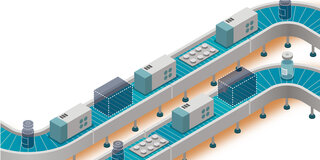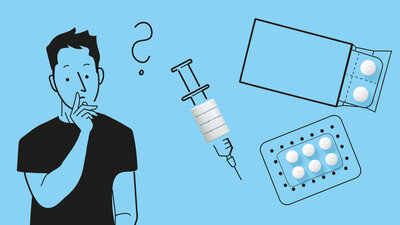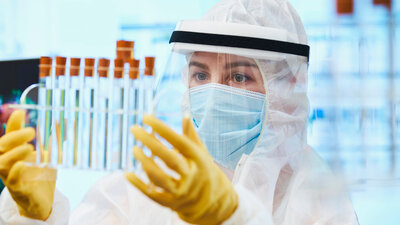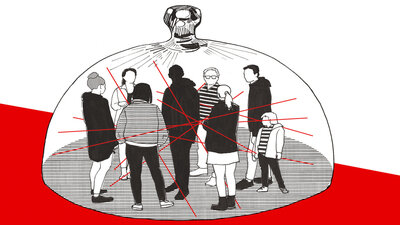Drugs Supply Bottlenecks Get More Common In Germany

There is currently a shortage of medicine and pharmaceuticals in Germany.
© W&B/Patrick Paulin
Early in 2022, the lives of about 130,000 women in Germany were in danger. Because of a missing pharmaceutical: tamoxifen. The drug inhibits the growth of tumour cells and thus helps to protect breast cancer patients. But if you tried to pick it up at your local pharmacy, you were told the following: Unfortunately, tamoxifen is not available at the moment due to a supply bottleneck.
The problem is still immanent, although the situation has eased. The tamoxifen case is just one in a number of such bottlenecks – a particularly severe one. Supply problems for pharmaceuticals have become common in Germany in recent years. In August 2022, the Federal Institute for Drugs and Medical Devices named 272 drugs for which the producers had reported supply shortages. A common reason: production problems.
Drugs supply bottleneck in Germany
These problems are relatively new. For a long time, Germany was seen as the ‘pharmacy of the world’. The country produced enough for its own use and also exported drugs on a grand scale. And still does – in certain areas. About 15 per cent of all drugs exported globally come from Germany. Innovation is still strong.
The Apotheken Umschau attempts to explain how the ‘pharmacy of the world’ became a country plagued by supply bottlenecks for pharmaceuticals. In three parts. We start with the history of the German pharmaceutical industry and drugs advancement. Part Two looks at the reasons behind the bottleneck. Finally, experts tell us how to solve the problem – and where Germany is still at the top.
Historian Dr Niklas Lenhard-Schramm can explain how Germany became the ‘pharmacy of the world’. His research at Hamburg University is concerned with the history of pharmaceutical regulation in Germany. ‘Here we had a strong starting position for the pharmaceutical industry at the end of the 19th and the beginning of the 20th century’, he says. ‘The country was well positioned scientifically, as the Nobel prizes for Emil von Behring, Robert Koch or Paul Ehrlich indicate.’
History course: The pharmacy of the world
Active agents and compounds like the fever and pain medications phenacetin (1888) or aspirin (1899) were developed in Germany. Aspirin is still in use, phenacetin was taken off the market as late as 1986. It was a chance discovery in 1888: The aniline dye industry discovered it in their waste. ‘Waste products were kept on the works grounds. Clever business people watched out for ways to use these substances’, Lenhard-Schramm explains. ‘These were companies with the power necessary to bring them to the markets.’ Pharmaceutical firms like Bayer or Hoechst emerged from these industries. And some pharmacies also went large: The Engel Pharmacy in Darmstadt near Frankfurt eventually became the chemical and pharmaceutical giant Merck.
With the First World War, the German pharmaceutical industry went into economic decline, partly due to the expropriation of company branches abroad. To consolidate their position, many companies merged into IG Farben (Interessengemeinschaft Farbenindustrie / Interest Association Dye Industry) after the First World War. During the Nazi era, IG Farben became the biggest chemical company in the world, mainly due to dispossessions. In 1947, executives the company were called to account for their contribution to war crimes and crimes against humanity at the ‘IG Farben Trial’ in Nuremberg.
The second economic decline for the pharmaceutical industry in Germany had happened during the Second World War. But once again, there was a quick recovery. Companies in West Germany benefitted from a general policy of economic liberalism. The economic upsurge was supposed to generate a positive international climate for the young Federal Republic after the devastation of the war and crimes committed against humanity under Hitler. Historian Lenhard-Schramm points towards the first Pharmaceutical Products Act of 1961, which stipulated very little control over the industry.
‘You rub your eye in disbelief if you look at the validation process’, he claims. ‘On just a few pages, you‘ll find information on the name of the drug, the size of the package or the price. Then one or two pharmacological and clinical reports in single-digit page numbers – that’s it.’ After drug scandals like the one related to the soporific agent thalidomide in 1961, the West German government in 1976 sharpened the law by passing the second Pharmaceutical Products Act which included a stricter approval procedure.
Today’s situation
Today, pharmaceuticals have to pass many tests and procedures before they can enter the European Union common market. First, there are laboratory tests, then tests on animals. Only after passing those, there are step-by-step clinical tests on people. The approval procedure can take many years and cost billions of Euro.
While research, development and approval still often take place in Germany or Europa, production has been outsourced to Asia over time. ‘Production is cheaper over there and often state-sponsored to undercut world market prices’, Lenhard-Schramm explains. ‘There is no fixed date from when on Germany was not considered the “pharmacy of the world” anymore. But due to globalisation, other markets have gained more and more importance.’
A Trip Around the World
Globalisation has made our drugs cheaper – but has also created new problems.
If you want to understand the reasons behind recent delivery problems, you need to look at a number of factors: Why the active agents are mostly produced in Asia today. Why the business of drug production is not lucrative enough for certain producers anymore. And what so-called discount contracts have to do with it.
Globalisation in pharmaceuticals
The majority of active agents for pharmaceuticals is produced in China and India. 68 per cent of the production sites for active agents destined for Europe can be found in Asia. That is the result of a study conducted by the German Economic Institute (IW) and the Health Care Supply Chain Institute on behalf of the Association of Researching Pharmaceutical Producers (VFA). The reason: costs. This development is a challenge, but also brings benefits, as Bayreuth University health economist Professor Volker Ulrich explains.
‘The production abroad also has advantages’, he says. ‘We benefit from a global division of labour.’ Globalisation makes pharmaceuticals cheaper – but also leads to delivery shortages. Particularly for so-called generics: drugs with active agents whose patent protection has expired. Generics cover 79.9 per cent of the drug demand in Germany. Therefore, hardly another industrial branch is as strictly regulated as the generics branch. The retail price is often capped by a reference price. Health insurers often pay just cents for a single pill.
When public health insurers put out a tender for a certain drug, it’s always the cheapest producer who wins the contract. If a company cannot cope price-wise, it loses out and then often ceases production. The consequences can be seen when looking at the example of the anti-hypertensive drug valsartan: Global production is limited to a few companies in Asia. At one of them, the production process was contaminated in 2018.
High market concentration
The company supplied various pharmaceutical producers all over the world with the active agent – and was suddenly out of action. Even worse: All medication possibly containing contaminated valsartan was recalled. In Germany alone, that concerned 40 per cent of all relevant compounds at the time.
Health economist Ulrich has been observing the situation with some concern for years now. ‘The cost pressure leads to more and more market concentration processes’, he explains. A good example is the bottleneck concerning tamoxifen in early 2022. Just four market relevant companies produced the breast cancer medication for the German market. They co-operated with just a handful of component suppliers, of whom some exited the market.
Their previous contribution could not be adequately recouped immediately, so pretty soon the supply shortage became prevalent. ‘Such cases have been on the rise in recent years’, says Ulrich. By now, only three generics producers supply the demand for tamoxifen-containing drugs in Germany.
Political actions
Politics have recognised the problem: The current German government intends to bring drug production back to Germany and the European Union, according to the coalition agreement signed by the ‘traffic light coalition’ of Social Democrats, Free Democrats and Greens. To achieve that goal, red tape should be cut. Even state subsidies for the pharmaceutical companies in question are considered. But nothing much has happened yet. A spokeswoman for the Federal Ministry of Health has reacted to an Apotheken Umschau query by emphasising agreements to boost the production of Covid-19 medication and vaccines in Germany.
Other measures to secure the supply are ‘currently under review’, the spokeswoman says. Health economist Ulrich considers so-called intelligent contracts the solution to the dilemma of supply bottlenecks. Most of the supply is nowadays secured via tender by the health insurers. They often award the contract to supply their customers with a certain medication to a single manufacturer. And then benefit when it comes to the price of drugs.
‘These discount contracts know only one criterium so far – and that is the price’, Ulrich explains. He suggests that in future, environmental and occupational safety aspects should also be taken into consideration: ‘That would make European locations more attractive again.’ Furthermore, health insurers should diversify their supply chains and make them more robust: ‘Insurers should principally sign contracts with at least two producers.’
Under such preconditions, Ulrich would not argue for a complete return of all steps of the production process to Germany. ‘Globalised supply chains are fundamentally important and right from an economic point of view.’ The rather more important aspect is a robust supply framework, he continues. At the European level, too, the member states work towards a good solution to the supply problems. In 2020, the EU Commission pointed the member states into a sensible direction. The states are now looking for a way to build a common reporting system for supply shortages within the European Union.
Possible solutions for the future
An early warning system would also make things easier for many pharmacists. A shortage of certain active agents has an impact upon their work, too: They have to search for alternatives. ‘Sometimes there is a comparable agent to which we can switch’, says pharmacist Susanne Koch, chairwoman of the Saarland Pharmacists’ Association (SAV). ‘Or we try and import the medication from abroad.’ And of course, pharmacists have the know-how to produce some medication in magistral preparation – ‘provided that the raw materials as such are readily available’, Koch adds.
Nevertheless, that process is pretty labour-intensive, as a poll conducted in 27 countries by the Pharmaceutical Group of the European Union (PGEU) indicates: Pharmacy teams in Europe spend 5.1 hours per week on average merely to administrate the shortages of drugs supply. ‘We don’t merely have to search for alternatives – we also need to confer with the doctor, change the prescription if necessary, and talk about the whole thing with the patients’, Koch recounts.
At the moment, pharmacies can react more flexibly due to pandemic-induced special provisions. They don’t necessarily have to sell the pharmaceutical cheapest for the health insurers if it is not immediately available. ‘That makes our job easier, and also insures a faster supply to our patients, of course’, says Koch.
However, these special provisions are currently limited in time – although supply bottlenecks will stay with us at least in the medium-term. Despite all good plans to return some of the drugs production: Organisation and the construction of production facilities will take time and money. Health economist Ulrich says: ‘The supply will naturally become more expensive if we enhance production in Europe.’ Politics and society therefore have to be ready to carry the additional costs.
The Research Laboritory of the World
Innovation. Europe and Germany may not be the ‘pharmacy of the world’ anymore. Nevertheless, pharmaceutical innovation remains a comparative strength.
For some years now, Germany has had to deal with drug supply bottlenecks. That, however, does not mean that the country has nothing to show for herself in the area – quite the opposite. As University of Bayreuth health economist Volker Ulrich points out, there is still a lot of expertise in Germany: ‘We have the skilled personnel and the know-how, that is a huge advantage.’
Pharmaceuticals: Made in Germany
While the majority of active agents – especially generics – is imported from China, Germany dominates in terms of research and development in many areas: Numerous innovative pharmaceuticals originate in Germany and get exported to the global markets. It’s an unabated success: From 2008 to 2019, the German pharmaceutical export volume has almost doubled to over 80 billion Euro per annum. In the course of the Covid pandemic, the industrial branch has benefitted from an increasing demand for drugs.
The label ‘Made in Germany’ is often a sign for highly complex pharmaceuticals. Modern biopharmaceuticals have opened up new methods of therapy. According to the Association of Researching Pharmaceutical Producers (VFA), 239 of such agents are currently approved in the European Union in total. 41 of them were developed in Germany. Only the USA are more successful in this segment.
The most well-known example for Germany’s success at the moment is Biontech. The company was founded in 2008 with the aim to develop new immunotherapies in the fight against cancer. However, the economic break-through came in 2020 with the development of a Covid-19 vaccine: Comirnaty. Unlike other vaccines by some producers, Biontech used the newly-developed mRNA technology. In co-operation with US drugs giants Pfizer, Biontech has already produced some billion vaccination doses.
Comirnaty is used in many countries all over the world. Other German drugs producers can also hold their own. Bayer is the global number 15 in terms of revenue. Germany’s second-biggest company Boehringer Ingelheim is in 17th place, Merck KGaA from Darmstadt near Frankfurt is 21st.
The ‘traffic light coalition’ aims to bring more pharmaceutical production back to the Federal Republic. Recently, however, the industry has openly questioned investments in Germany.
From pharmacy to research laboratory
Hamburg University historian Dr Niklas Lenhard-Schramm, who researches the history of pharmaceutical regulation in Germany, likes to emphasise the innovative power of the country: ‘Germany may not be the “pharmacy of the world” anymore’, he says. ‘But you can easily call the country – or rather: Europe – the research laboratory of the world.’
Nevertheless, Lenhard-Schramm too argues for an increasing return of generics production to the Old Continent. ‘The developments in Ukraine have shown up the problems that emerge when there is too much dependency on raw materials from other countries’, he says. ‘What if there is a crisis with Taiwan? Would we stop importing essential pharmaceuticals from China? We should get ready for such scenarios.’
Whether Germany will succeed in bringing more pharmaceutical production back is open for discussion. While politics have recently proposed that objective, the pharmaceutical industry has openly questioned investments in Germany. That is based on the disappointment about austerity plans by the German government to tackle the deficit generated by the country’s public health insurers. The plans include demands for further rebates from the pharmaceutical companies.
Federal Health Minister Karl Lauterbach (Social Democrats) talks about an act of solidarity and intends to make the companies oblige. Health economist Ulrich agrees that costs need to be cut. However, he also asks for prudence: ‘Of course, further burdens on the producers may influence upon the industry’s location decisions.’ Pharmaceutical companied need profits to finance research and development. ‘Otherwise, Europe might not only be lacking production sites. The research pipeline, too, might soon be dried-up.’






